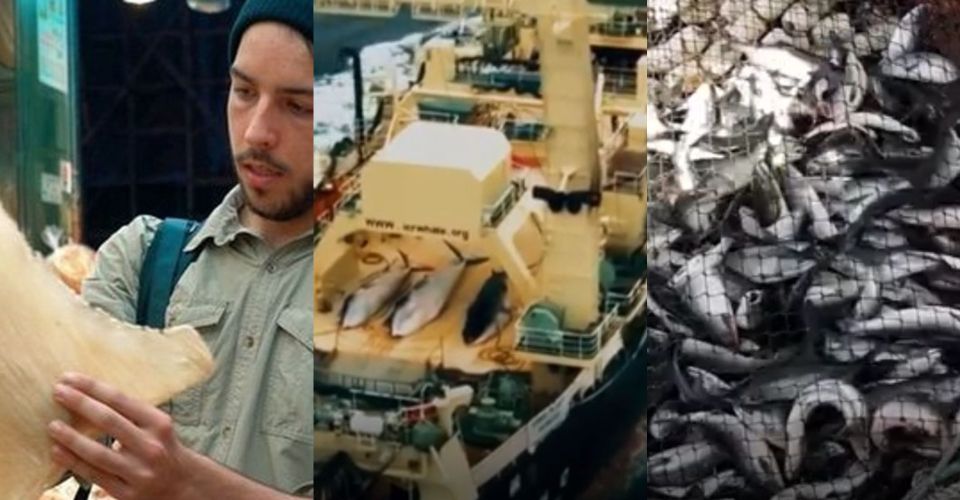10 Most Important Messages In Seaspiracy

Ali Tabrizi set out to share the beauty of the watery world he’d loved since he was a child but instead uncovered oceans of horror. He shared his discoveries in Seaspiracy—the Netflix documentary that sparked a conversation about the commercial fishing industry and its harmful impact on the world’s oceans.
The documentary has received both positive and negative reviews, with some applauding its call-to-action to stop eating fish while others have called it flawed and a misrepresentation. Nevertheless, Seaspiracy has several important messages that are worth the attention the documentary has garnered.
10 Plastic Straws Shouldn’t Be The Only Worry

At the beginning of the documentary, Ali highlighted the issue of plastic waste polluting seas. The nature of the waste includes straws, bottles, cutlery, and plastic bags. According to Seaspiracy, the equivalent of a garbage truckload of plastic is dumped into the sea every minute. To make matters worse, these plastics end up in the stomachs of sea creatures like whales and dolphins who are dying from this by the hundreds.
As tragic as this is, the documentary highlights that an even greater percentage of plastic trash ending up in seas is a result of commercial fishing. However, the lack of reports about this as compared to those about plastic straws and other waste, as well as climate change is a big part of the problem.
9 “If The Ocean Dies, So Do We”

The grim quote was an assertion made in the documentary, showing the link between the tragic deaths of animals from plastic pollution in the sea to the earth’s welfare. As the documentary explained, dolphins and whales fertilize small marine plants called phytoplankton, found in the ocean.
These marine plants in turn absorb four times more carbon dioxide than the Amazon forest and generate up to 85% of the oxygen we breathe. Hence, the death of whales and dolphins sets off a chain of events that ends with very little oxygen production necessary to sustain life on earth.
8 Commercial Whaling Is Part Of The Problem

Apart from plastic pollution, Ali discovered another thing killing whales and dolphins is whale hunting. In a place called Taiji, about 700 dolphins and small whales are herded into a cove for slaughter every year.
In this area, some dolphins are captured for sale to marine parks, but a majority of them are killed. The reason? Apparently, dolphins eat too many fish, which lessens the amount available for catching and selling. The documentary, however, argued that this was an excuse being used to cover up the issue of overfishing.
7 Not All “Sustainable Seafood” Is Sustainable

One of the most shocking revelations of the documentary was the reality that the sustainable seafood label might not be a guarantee of sustainability. In fact, from interviews with people from organizations like Oceana, the documentary came to the conclusion that it’s next to impossible to know what exactly happens out on the sea and if any sea creatures are killed during the process, hence it’s impossible to guarantee sustainability.
The worst part was the revelation that a trusted label, the MSC blue tick from the Marine Stewardship Council, was being given to fisheries certified as sustainable yet they produced a shocking level of bycatch. This was only the tip of the iceberg of the scandals revealed by the documentary.
6 The Fishing Industry Needs An Overhaul

According to Seaspiracy, in spite of hundreds of fishing regulations in place to minimize things like bycatch (species from the sea captured along with the targeted species), ensuring that they’re enforced is difficult. This is mostly because of the millions of commercial fishing vessels at sea at any given time, unmonitored.
The fishing vessels themselves are also responsible for the death of sea turtles and other marine creatures through practices like bottom trawling. This practice is estimated to wipe out approximately 3.9 billion acres of seafloor every year and without a major change in this area, there might not be any creatures left before long.
5 Shark Finning Has A Huge, Negative Impact

During the investigation of whaling practices in Taiji, the filmmakers discovered that sharks were also being killed for their fins, mostly for shark fin soup. The Netflix documentary points out that while reducing the number of sharks in the seas doesn’t seem like a bad thing, it can actually destroy the marine ecosystem even further.
The explanation for this was that sharks, being apex predators and at the top of the food chain, keep the population of the creatures directly below them under control. Without sharks, these second-level creatures would increase in number and deplete the third-level creatures they feed on. Once these are depleted, the second-level creatures would die out without anything to feed on and the oceans may eventually end up empty.
4 Awareness Of Overfishing Is Necessary

The world can’t begin solving a problem they’re not aware of and that’s what Seaspiracy set out to address. In the documentary, Ali states that commercial fishing results in the catching of up to 2.7 trillion fish every year. A consequence of this is the near-extinction of certain species of the global fish population.
The documentary goes on to state that one of the world’s leading fisheries experts estimates that if overfishing continues at the current rate, the oceans will “virtually be empty by 2048.”
3 Overfishing Is Linked To Diseases

In areas like West Africa, overfishing has resulted in pirate ships traveling under the cover of the darkness of night to illegally fish in those waters. With reduced quantities of fish, the people there end up relying on other sources of food to survive, like bush meat.
According to scientific studies, the bushmeat trade is responsible for zoonotic diseases such as the Ebola epidemics that plague the area. And if it’s not stopped, it could continue to enhance or cause outbreaks of Ebola and other diseases.
2 Simple Solutions Are Not Enough, But They’re A Start

In reference to the many calls against plastic straws, Ali likened the significance of plastic straw bans to “trying to save the Amazon rain forest and stop logging by boycotting toothpicks.” The documentary highlighted the lack of awareness and action against ocean pollution caused by fishing.
Seaspiracy also highlighted the ineffectiveness of the protocols in place to guarantee that seafood was indeed sustainable. The call to stop eating fish, for example, is a simple one, but one that’s believed to be a step in the right direction.
1 Not Consuming Fish Can Save The Oceans

Seaspiracy’s final message was a call-to-action urging everyone to stop eating fish and switch to alternatives from the farming and food industry. The logic is that this action will eliminate the commercial fishing industry and its detrimental impact on the oceans.
With fewer dolphins and whales being killed in the process of fishing, the belief is that the biological processes involved in keeping the ocean alive and thriving will continue unhindered, leading to a world with safer seas and oceans.
About The Author

















